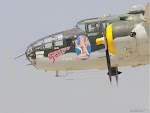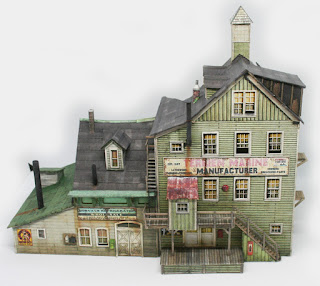Going Batty in the Train Room
Some years ago, my wife and I moved into a new house
–actually an old house, built in 1865. I laid claim to half the basement and
began construction of a model railroad.
First, I installed sheetrock to the ceiling and insulation
to the walls in my layout area. The resulting ceiling was low, about six and a
half feet, and made lower still in places by support beams and hot water pipes.
I’m six feet tall, the ceiling was rather lower than that in spots, but this
was the space I was given and I resolved to make the best of it. Generous
amounts of foam rubber applied to pipes and beams helped to keep my skull
intact.
Above the sheetrock, in a corner of the layout area lived a small
family of little brown bats who were spending the winter in the rafters of the
basement. With just a half-inch of plaster between them and me, we, by
necessity, came to a gentleman’s agreement that prevailed most of the
time: I wouldn’t bother them and they
wouldn’t bother me.
I say most of the time. They were a disreputable bunch. They
would get rowdy now and then, and they could make a lot of noise, especially
when they’d been drinking. If they put up too much a racket, I would bang on
the ceiling and shout a few insults at them. Sometimes that would quiet them
down. Just as often, they would reply by squeaking insults at me. And their
insults could get awfully personal.
Occasionally, one of these miscreants would scramble over to
the un-sheetrocked part of the basement and drop down for a few snap rolls and
split-S’s around the basement, just to show off. I would acknowledge its
aerobatic skill with some fairly colorful comments, while my two young
daughters hid under the layout. Or maybe it was my comments that sent them
into hiding. I’m not entirely sure.
If the little aerobat got too close, I’d threaten it with my
tennis racket. If that didn’t work, I would retreat upstairs and watch “Making
Tracks” reruns until the little villains sobered up (the bats, not my
daughters).
At their worst, the bats would sit above the sheetrock over
my head and tell dirty bat jokes, rolling around, scratching, giggling, and
snorting, and using the most gawdawful grammar. It was disgusting.
Of course this is all pretty typical for bats. I never met
one that could stay out of mischief or write a decent sentence. Well, maybe
one. There was a long-eared bat I met once in Amarillo, Texas, but that’s
another story.
When spring arrived, the bats moved out and I patched the crack
in the foundation that was their front door. It’s a lot quieter in the train
room now, except when I set my workbench on fire with my soldering gun, or when
a locomotive derails onto the basement floor. At times like those,
I’m kind of grateful to the little hairballs for all the colorful language they taught me.





















